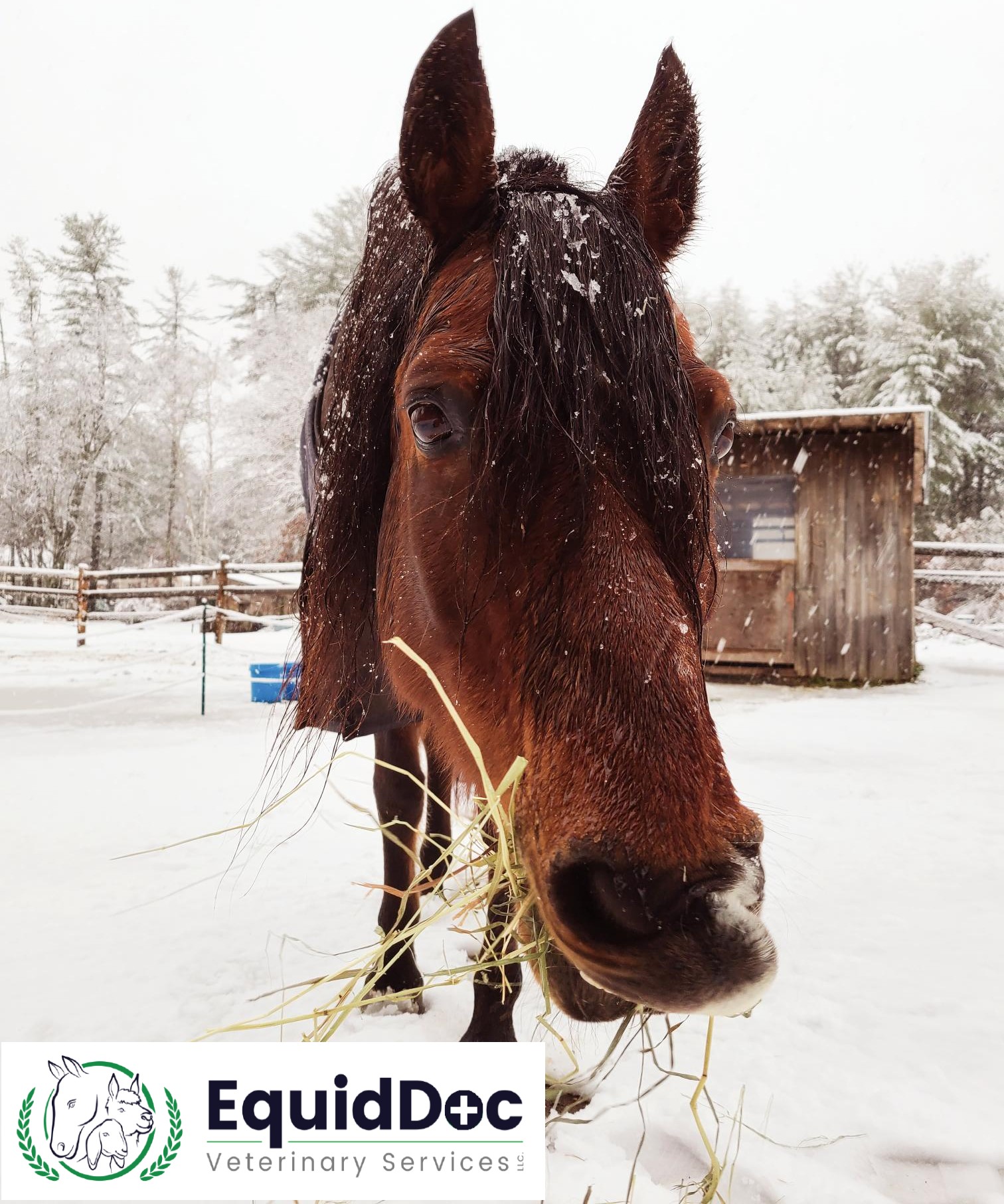Will the Farmer’s Almanac be right or wrong? New England winters seem to be different every year, so let’s prepare for the worse & hope for the best! Healthy horses are efficient at keeping heat captured in a dry, thick winter coat from heat produced by the fermentation process of fiber in the hindgut. Healthy is a keyword; like any species, aging and pre-existing disease processes will make basic bodily functions less efficient. Below are a few tips for helping your horse get through a Massachusetts winter.
- Food– Fermentation of fiber in the hindgut produces the most heat, keeping your horse toasty warm. The bulk of fiber comes from long-stemmed forage in the horse’s diet, and since we are in New England, that means hay, and for some elderly horses, this means hay pellets or cubes. EquidDoc recommends always soaking hay pellets and cubes to avoid esophageal obstruction (aka, choke).
- Shelter– Often times horses prefer to stand out in New England blizzards (with or without a blanket), and that is OK if they have access to a shelter with a roof and 3 solid sides or are placed in a stall if no run-in shelter is available. Herd size and pecking order should be considered when horses share a run-in shelter.
- Water– Horses daily water intake increases in the winter months, so it is imperative horses are getting what they need. Ice and snow do not count as water intake, even though horses may lick or gnaw on ice and snow. Horses that are consuming ice and snow may already be dehydrated. Breaking and removingice from water buckets and troughs are ideal since horses prefer water around 45°F-65°F (the temperature of most tap water in winter). See our Facebook page for more tips to encourage drinking!
- Blanketing & BCS (Body Condition Score)– Keeping tabs on a horse’s BCS can be tough once blankets are on and even more difficult when horses are stabled elsewhere. Blankets should be removed daily to check BCS, check for rubs and sores, and to ensure the blanket is dry underneath. Thick, fluffy winter hairs stand up on end to hold in body heat. If their blanket is wet underneath or is too tight, hairs cannot stand up to insulate your horse and they will have a tougher time regulating their temperature.
- Hoof Care– Horses’ hooves grow slower in the winter, so some can lengthen the time between hoof trims, however, it is important to continue checking the hooves on a regular basis. As snow and ice hits the ground this winter, it is common for horses’ hooves to get packed with both, making it especially difficult and potentially dangerous for them to get around! Barefoot horses have more traction than regularly shod horses. If horses are shod during the winter, it is ideal to get pads and studs for the best traction.
The EquidDoc veterinary services team is happy to answer any & all questions as you navigate New England Winter 2022! You can reach us @ 508-885-4205 or email us at office@equiddocvet.com!


